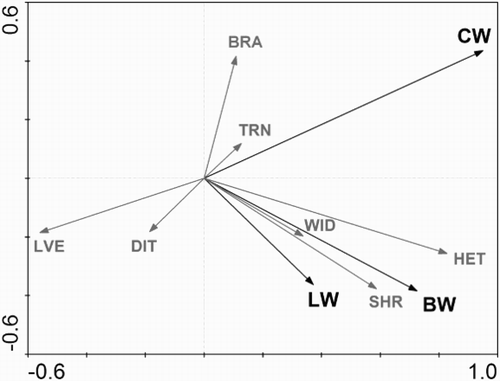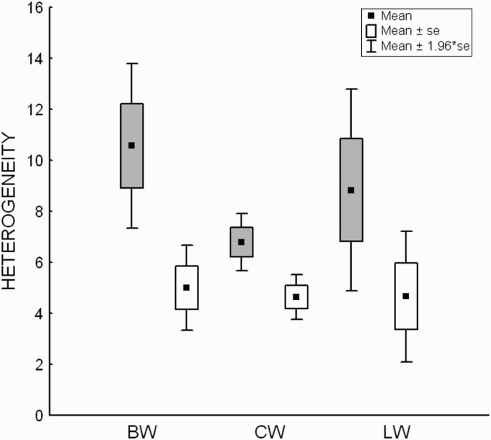Figures & data
Table 1. Mean values, standard errors and ranges for habitat measurements of sections of linear habitats associated with the presence of a breeding territory of Barred Warbler, Common Whitethroat and Lesser Whitethroat.
Table 2. The number (t) and density of breeding territories of studied Sylvia warblers within the 10.0 km2 study area, and their number, number per km and percentage located in linear habitats within the study area.
Figure 1. The RDA ordination diagram (showing first – horizontal and second – vertical ordination axes) displaying the habitat preferences (black arrows) of Barred Warbler (BW), Common Whitethroat (CW) and Lesser Whitethroat (LW) among the seven linear habitat variables (grey arrows). The angle between axes of the ordination diagram and species and habitat variable arrows show the power of the correlation. Abbreviations of habitat variables are as follows: TRN – the numbers of trees, BRA – brambles and nettles, LVE – herbaceous vegetation, SHR – shrub volume, DIT – a ditch occurrence, HET – heterogeneity and WID – the width of the section.

Figure 2. Mean (±se, ±1.96*se) heterogeneity of occupied (grey boxes) and unoccupied (white boxes) sections of linear habitats of Barred Warbler (BW), Common Whitethroat (CW) and Lesser Whitethroat (LW). The heterogeneity of occupied and unoccupied sections was compared using Ranked-Sign Wilcoxon tests (Barred Warbler – T = 2.00, n = 7, P = 0.043; Common Whitethroat – z = 3.45, n = 30, P = 0.00053; Lesser Whitethroat – T = 2.00, n = 6, P = 0.028).
